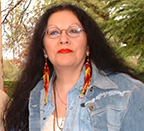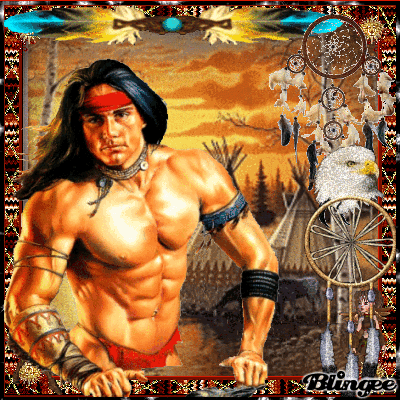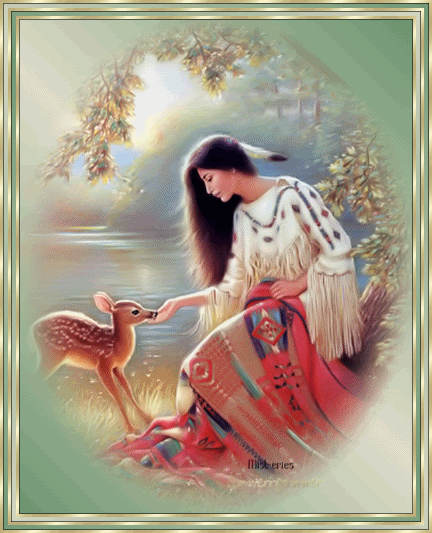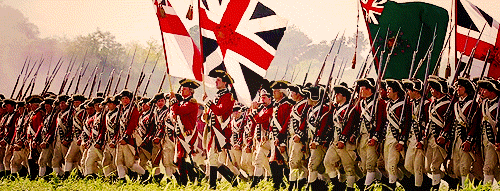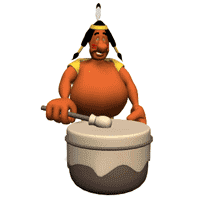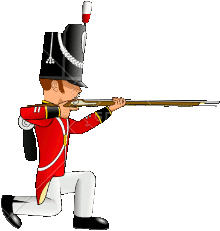SHANNON THUNDERBIRD’S WORLD VIEW
 “Women of the world, hang on to your nerves, and hold onto your breaking hearts, the healing power of the Matriarchy is rising.” “Women of the world, hang on to your nerves, and hold onto your breaking hearts, the healing power of the Matriarchy is rising.” |
| www.windspeaker.com/news/opinion/letter-from-an-unrepentant-elder-regarding-women-at-the-big-drum/
It is incredibly pathetic how the beat goes on regarding women at the big drum. This is my latest response to an article published in Windspeaker regarding the banning of the Chubby Cree Women’s Big Drum at a powwow in 2017. My response was published in Windspeaker on January 3rd, 2018. It is my ongoing correction of false ideologies as some try to rewrite Indigenous feminine history. As my sister said: “it is tedious how the same old argument has to be made because of stupid old men.” |
 THUNDERBIRD’S COMMITMENT TO HER CULTURE THUNDERBIRD’S COMMITMENT TO HER CULTURE |
 FOR WOMEN: TO SKIRT OR NOT TO SKIRT THAT IS THE QUESTION FOR WOMEN: TO SKIRT OR NOT TO SKIRT THAT IS THE QUESTION |
| THE ARROGANCE OF CULTURAL APPROPRIATION
By Coast Ts’msyen Shannon Thunderbird, M.A. and Kate Dickson, B.A. (Hon.) The act of cultural appropriation is a contentious issue and rests on the definition, “to take for one’s own use without permission.”[1] With regard to such acts of theft, Indigenous people have suffered unimaginable losses over the past seven hundred years. Lands on which Natives lived for thousands of years and which were and are considered ‘traditional’, were appropriated without regard by Europeans on the approval of the Crown. Our Ancestors were then forced onto reserve lands, often a distance from the territories they had known; this was just the start of what the Indigenous lost and continue to lose to this day. Numerous writers and politicians have attempted to change opinions over the years either by paying lip service to Canada’s First People or blatantly dismissing them as a viable group. Indeed, they have preferred to make the case for the sanctification of the confiscation of cultural artifacts under the guise of preserving the past. One of the latest opinion makers is former Editor-in-Chief, Hal Niedzviecki, of Write Magazine (the publication of the Writers’ Union of Canada) who wrote an audacious editorial entitled, Winning the Appropriation Prize. He writes: “I don’t believe in cultural appropriation. In my opinion, anyone, anywhere, should be encouraged to imagine other peoples, other cultures, other identities. I’d go so far as to say that there should even be an award for doing so – the Appropriation Prize for best book by an author who writes about people who aren’t even remotely like her or him.” The operative word here is imagine which implies a writer having carte blanche to re-invent history, provide inaccurate cultural details and take license with current ways of being and thinking of a particular group about which he/she has little or no knowledge. We are in mind of the early Jesuits who described in their reports back to the mother county, the Haudenosaunee longhouses as “miniature pictures of hell.” We are pressed to ask if they imagined hell being stocked with heathens living in filth which, of course, ruled out anyone else in the known world who committed sins against the church. Mr. Niedzviecki’s smug attitude has us wondering how a writer with little or no knowledge can imagine residential schools, the implication of the Indian Act of 1876, the loss of identity of Native women and children, the 60s scoop, to name four significant albeit atrocious events in our history. Cultural oppression leading to appropriation is not something to be dismissed like yesterday’s news; in our world, it is real and a constant threat within communities. It is wise to remember that cultural integrity keeps Indigenous knowledge alive and functioning in the purest of ways which is why, for example, the ribbon shirt looks wonderful on the Anishinaabe, the dances of the Haudenosaunee are rich in their storytelling, the Tsimshian button blankets reflect the rugged vitality of the pacific northwest coast of British Columbia, to name only three examples. We would not choose to take on the wearing of regalia or the specific customs of a group that is not our own. Indigenous culture is oral in nature and thus art, music, carvings, regalia, ceremony provides cultural and historical contexts, and act as the social cohesion for communities. The narratives constitute the cultural grounding of Indigenous people. Cultural guardians are usually Elders or Spirit Doctors who carry the history and knowledge of their people and are highly revered. From ancient days to today, hearing the words from an Elder who tells it with solemnity and dignity adds weight to the importance of the knowledge. The point is, our culture is not static, waiting to become museum based; rather, it was and is lived, loved and learned. Having someone with no tie to the bloodline and culture and who is charged with the task of looking in and providing interpretive commentary is simply insulting to our tens of thousands of years history. In fact, I can’t think of any culture that makes room for observers to “…to imagine other peoples, other cultures, other identities.” What people think they know about the world of Canada’s Indigenous people comes from what has been written by observers. Certainly, an oral tradition has its problems in a world that only puts credence only in the written word. We resist situations where Indigenous people are viewed as legally permissible and barely tolerated, as long as we remain behind closed doors. Yet there does not appear to be a problem with plagiarism at all levels of our culture. We have never forgotten that our life dream depended on our judicious care of the land and each other. You see, we are more than the sum of our physical parts, or our tribal names, and we accept without limits or conditions, our role as Mother Earth’s caretakers. Never in the history of the world has a race of people been so exposed to so many people who know so little, but think they can wade in whenever they want. Never has a race of people had their culture purloined in so many ways by so many misguided souls who often work feverishly to become more Native than Indigenous people. Moreover, there are others who tend to become self-proclaimed experts after a weekend, who then proceed to offer their own sweat lodges, and other sacred ceremonies for a price. We lament again, never has a culture had to put up with so much from so many for so little gain. We remain behind, not quite good enough to be acknowledged as culturally valuable except for that which can be sold for profit, or which can be exploited in the name of ‘humanity’ by an indifferent government to make them look good on the world stage. We are not wealthy people, so it is often difficult for us to keep our history in the forefront. We are not in a financial position to build monuments and museums showing the abuses of the last seven hundred years. And, importantly, we are not fodder for Mr. Niedzviecki or any other so-called pundit who selects us to be the Appropriation Prize. Gatgyet Haayk Gani – We Keep Our Spirits Strong [1] Webster’s New World Dictionary, 3rd edition, 1986. |
| ARTS EDUCATION – THUNDERBIRD’S COMMITMENT
No one can participate in human conversation/experience or have a true understanding of human history without engaging in the study of the arts. They are as integral to an enlightened citizenship as the understanding of numbers, science, words, technology and history. Through my work with organizations that have included: Prologue to the Performing Arts, Arts for Children and Youth (AFCY), ArtsSmarts, Aboriginal Education Centre (TDSB) and my own production company, I have brought Indigenous arts education, culture, history and spirituality to thousands of students both nationally and internationally. Such education is vital to quell misunderstandings, deliberate or otherwise, of the First People that undermines us and underestimates our immense contributions to the common good. As Canada’s Original People, our voices must be heard and understood. Canadian youth are the primary stakeholders in the future of our world, and the health of the environment. There is an urgency for the Indigenous voice to be heard as learning about the richness of our culture, helps to strengthen the resolve for ALL people to create strong cultural, social and economic connections. That is why we are being called back to the drum to share what we know. That is also why I resist situations where we are viewed as “legally permissible and barely tolerated.” My shows and presentations are formulated for good minds open to reason, hearts open to love, and to those who see our true identity as valuable contributors to Canada’s rich cultural mosaic. Like all good people we people do not exist for ourselves alone, but for the sake of humanity. Our fundamental motivations have always been to be in service to others by proclaiming the truth of our existence in a way that teaches and elevates. What better way to celebrate this than to offer presentations that educate, entertain and inspire. All My Relations. ….REMINDER – My programs support the Canadian Indigenous Studies Curriculum for Grades K-12…. |
ON LEADERSHIP FOR ALL
| The Covenant and Power of Matriarchy Lies in Our Humanity |
| There is no freedom of speech when people are terrified of being wrong |
| GENERAL GOALS FOR ORGANIZATIONS
–Encourage collaboration across cultural, political, social and professional boundaries. –Build stronger links between colleagues. –Emphasize the need for partnerships, team building and consensus. –Support for middle Managers – it is generally their posteriors on the line! –If the organization is a circle with the top revolving around the bottom which revolves around the middle, which revolves around the top, then much more can be accomplished because everyone knows what everyone else is doing. —Identify, evaluate and respond to the many factors that determine a successful work environment. –Create a new matrix for evolving new models of behaviour and creating dynamic new alliances among a variety of traditions and disciplines. –Understand the importance of employee diversity in the workplace. –Understand that Reflection and Contemplation are important Life and Business skills. –Review Shared leadership tenets below. |
 Definition of Shared Leadership for Native Cultures and ALL Organizations Definition of Shared Leadership for Native Cultures and ALL Organizations
Modern Native cultures are complex and difficult; it never used to be this way, but the imposition of European beliefs and values on well-established Indigenous communities forever changed us. After “The Change” (basically 1491), how my Ancestors were treated became a patchwork quilt of racist, knee-jerk reactions by all-levels of Canada’s new Government(s). The bottom line was always divide and conquer, assimilationist policies which were founded on appalling intolerance and flat out aggressive, warrior attitudes, including the first acts of germ warfare perpetrated on a North American people. (See Facts and Fantasy). As a result tribal societies were and continue to be torn apart; over time the infighting among First Nations people escalated to a level that is now legendary amongst urban and reserve communities. The oppressed became the oppressors turning against themselves. Corruption is now almost commonplace. A number of organizations quite enjoy the patriarchal ‘Power-Over’, hierarchical mentality adopted from European attitudes, and have gotten away from the matriarchal, shared leadership, consensual behaviour that ruled us for thousands of years. In fact, most Band Councils are dominated by men reluctant to relinquish their power. In the time before The Change, shared leadership respected the gifts and talents of everyone, because it was felt as long as each person could use their special gifts, the people would hum for another day. Each person was valued, in other words, for what they could bring to the collective table of life Having said all that, it behooves all four main global cultural groups (Red, Black, Yellow and White) to get together in a manner that pleases their Ancestors in a spirit of peace, cooperation to create a better world for ourselves and future generations. There is not much time left, as the prophecies state we are in our final days. We must elevate ourselves above jealousy, hate, racial discord and disharmony. There is still time. SHARED LEADERSHIP IS: –A representative and collaborative decision making process characterized by collective empowerment. A co-operative effort, in other words, that should involve: Reserve and Urban Native Cultures; Elders, Women, Men, Young People and Children. These groups should include: status or non-status First Nations, Métis, Inuit, and any group or individuals committed to the elevation and promotion of Native culture, history and spirituality; all levels of Indigenous and Canadian organizations and government infrastructures. –A commitment to the principle of respect for the opinions of all those sharing in a common purpose. –All social, political, racial groups must be treated equally, fairly. Every voice must be heard without judgment, criticism. –Each person must be given the respect she/h deserves to stand in the truth of what she/h believes. –As difficult as it is to do, “power over” mentalities, that is the desire to impose leadership, on another must be set aside for the simple reason that this is not true leadership, but one person, gender or group’s desire to exert control for their own sake. –Autocratic or authoritarian opinion in and of itself has no place within peaceful interaction. It upsets the balance and does not allow for participative or democratic exchange. –Final decision-making authority can rest with a few, only if the body as a whole approves. –Delegation in order to allow to free creative expression only strengthens a circle, not diminish it. This requires trust in your own ability as a leader to allow someone who perhaps knows more than you on a particular issue to run with it. –Delegation also extends to groups if you as leader, and the group member are confident they can do the task without overt supervision. –True leadership is all about support, sharing, caring and cooperation. –Comprises structures, procedures, standards and time limits arranged to make decisions and policy in an orderly and effective manner. –True leadership is knowing when to hold, when to fold, when to give, when to receive. –Necessitates that all participants attempt to arrive at a consensus when making decisions appropriate to their responsibilities. Therefore, all participants share in the consequences of those decisions. –Neither create nor sustain groups or organizations that benefit only certain individuals or particular interest group(s), but function to achieve the elevation, missions and purposes of all of Canada’s Indigenous Peoples. |




 “Always among the highest expression of every culture, the arts teach us much about every historical period through its literature, visual arts, music, dance, and drama. Today it is recognized that to be truly well educated one must not only learn to appreciate the arts, but must have rich opportunities to actively participate in creative work. The arts are languages that most people speak, cutting through individual differences in culture, educational background, and ability. They can bring every subject to life and turn abstractions into concrete reality. Learning through the arts often results in greater academic achievement and higher test scores.” (www.newhorizons.org)
“Always among the highest expression of every culture, the arts teach us much about every historical period through its literature, visual arts, music, dance, and drama. Today it is recognized that to be truly well educated one must not only learn to appreciate the arts, but must have rich opportunities to actively participate in creative work. The arts are languages that most people speak, cutting through individual differences in culture, educational background, and ability. They can bring every subject to life and turn abstractions into concrete reality. Learning through the arts often results in greater academic achievement and higher test scores.” (www.newhorizons.org)